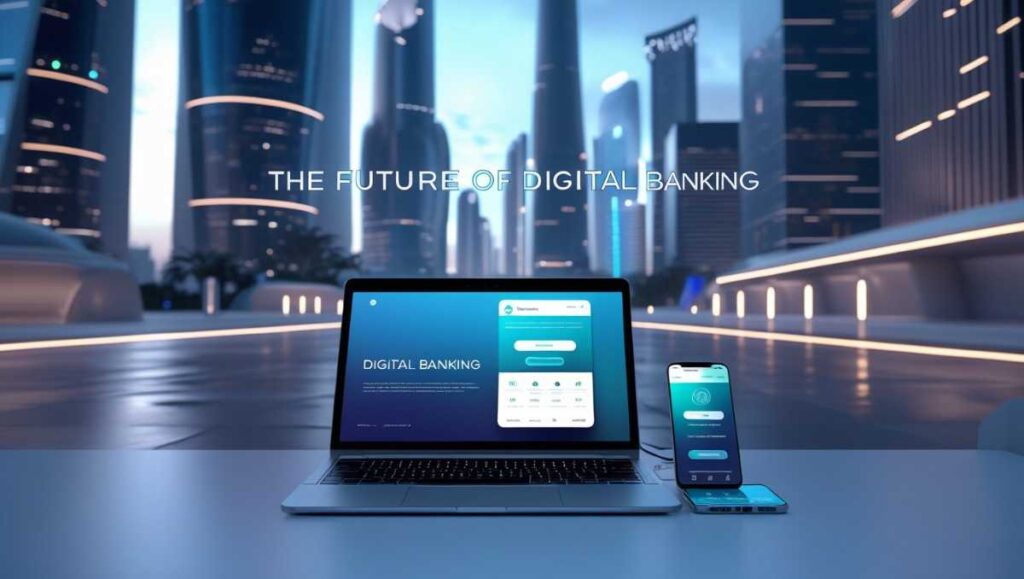
In today’s fast-paced, technology-driven world, the way we manage our finances is undergoing a dramatic shift. The rise of digital financial services, often referred to as “neo-banking,” is transforming the business and financial landscape, making it easier, faster, and more convenient than ever before. Gone are the days when visiting a physical bank branch was necessary to perform basic financial transactions. Thanks to advancements in technology, a wide array of financial activities can now be executed with just a few clicks on your smartphone or computer. This article explores the evolution of digital financial services, their benefits, future prospects, and how digital payments platforms are playing a significant role in this digital revolution.
Understanding Digital Financial Services

Digital financial services, commonly known as “neo-banking,” represent a fundamental shift in how we engage with financial institutions and manage our money. Neo-banking provides a fully digital alternative to traditional banking services. Consumers no longer need to visit a physical branch to perform everyday banking tasks, such as transferring money, making payments, or even managing investment portfolios. Through digital platforms, these services are accessible at any time, from anywhere.
The traditional banking model, which relies on brick-and-mortar branches, is being replaced by innovative technologies that allow users to interact with their finances more seamlessly. Digital financial services leverage mobile apps, online portals, and cloud-based technologies to offer everything from basic banking services to advanced financial management tools. These services are not only more accessible but also tend to offer a wider range of features that can be tailored to individual needs.
For example, digital payment apps and other digital-only banks provide users with the ability to open accounts, track expenses, receive payments, and even access loans—all from their smartphones. This shift to digital has empowered consumers by offering more control over their financial decisions while simultaneously increasing accessibility and efficiency within the financial ecosystem.
Evolution of Digital Finance

The journey of digital financial services began decades ago, starting with basic online banking, which allowed customers to check account balances and transfer funds via the internet. However, the evolution of digital finance did not stop there. As technology advanced, so did the services offered. Today, neo-banking includes everything from digital wallets and mobile banking apps to advanced payment methods like cryptocurrency and blockchain technology.
This shift was driven by the increasing demand for convenience and the desire to manage finances in real-time. For instance, mobile wallets, which allow users to store and use credit and debit card information directly from their smartphones, have revolutionized how people make purchases. This change is especially noticeable in industries like retail, where mobile payment apps like Apple Pay, Google Pay, and Samsung Pay have made it easier than ever to complete transactions with just a tap.
As digital financial services continue to develop, the range of services is expanding rapidly. Consumers now have the ability to take out loans, invest in stocks, and even receive personalized financial advice—all through their smartphones. The integration of artificial intelligence (AI) and machine learning has also played a major role in this evolution by allowing financial services to be more personalized and predictive.
Benefits of Digital Financial Services

There is no doubt that digital financial services bring significant advantages to both consumers and businesses alike. One of the primary benefits of neo-banking is the unparalleled ease of use. Consumers can check their balances, transfer money, and pay bills from the comfort of their homes, at any time of day or night. This is especially beneficial for individuals who live in remote areas or those who cannot easily access physical bank branches.
Another key advantage of digital financial services is enhanced security. Advanced encryption and multi-factor authentication ensure that users’ sensitive data is protected. Additionally, many digital banking platforms use biometric authentication (such as fingerprint scanning or facial recognition), which adds an extra layer of security when making payments or authorizing transactions.
The ability to manage finances in real-time also provides users with a higher degree of control over their spending and savings. Mobile banking apps, for example, allow individuals to track their spending habits and set up budgeting tools to monitor their financial health. This transparency can help users make better-informed financial decisions, ultimately improving their financial well-being.
Moreover, digital financial services also contribute to financial inclusion by reaching underserved populations. Traditional banking systems often leave behind individuals in rural areas or low-income households who may not have access to physical bank branches. Digital financial services, however, can reach these individuals, offering them the opportunity to participate in the financial system and gain access to basic banking services such as savings accounts and credit.
Impact of Digital Financial Services on Traditional Banking

The rise of digital financial services has had a profound impact on traditional banks. As consumers become more accustomed to the convenience of digital-only banking, many are beginning to prefer these services over the traditional brick-and-mortar model. This shift in consumer behavior has prompted traditional banks to invest heavily in their digital platforms to stay competitive.
In response, many established banks have begun offering mobile banking apps and other digital services, aiming to provide customers with the same level of convenience and accessibility found in neo-banking. However, the success of these digital offerings has varied, with some banks struggling to fully transition to the digital age. The challenge lies in replicating the ease of use and innovative features that digital-only platforms offer.
Furthermore, the introduction of digital financial services has made financial services more accessible to individuals who might otherwise have been excluded from traditional banking. For instance, in many developing countries, mobile banking services are providing access to financial tools for people who lack bank accounts due to geographical, financial, or social barriers. This shift is improving economic opportunities for individuals who previously had limited access to financial services.
Innovations in Digital Financial Services
The digital financial services industry has been a hotbed of innovation, particularly when it comes to new payment methods and digital wallets. The advent of mobile wallets has made it possible for users to store their credit card information securely on their phones, facilitating seamless payments at millions of locations worldwide. Digital wallets also provide the added benefit of reducing the need to carry physical cards, which is both convenient and secure.
Beyond mobile wallets, emerging technologies like blockchain and AI are starting to play a major role in shaping the future of digital finance. Blockchain technology, for instance, allows for secure, transparent, and decentralized transactions, which could radically transform the way money is transferred across borders. AI, on the other hand, is being used to offer personalized financial services. AI-powered platforms can analyze users’ spending habits and provide tailored advice or recommendations, helping consumers make smarter financial decisions.
Machine learning is also enhancing fraud detection in digital financial services. Algorithms can now detect patterns in real-time to identify suspicious activity, allowing for immediate action to prevent fraud. This ensures that users’ funds remain secure, further enhancing trust in digital platforms.
Role of Technology in Shaping the Future of Digital Finance

Technology is at the core of the digital financial services revolution, and emerging technologies will continue to influence how we manage and move money in the future. The integration of blockchain and decentralized finance (DeFi) will likely drive a significant transformation in the way we exchange value. Blockchain’s transparency and security make it an attractive solution for cross-border transactions, eliminating the need for intermediaries and reducing transaction costs.
In addition to blockchain, the Internet of Things (IoT) is poised to further integrate the digital and physical worlds, creating a more seamless financial ecosystem. IoT devices, such as smart appliances and connected vehicles, could enable payments to be made automatically based on user preferences. For instance, you could make payments for your groceries, utilities, or even your car rental, all from your connected devices.
Big data analytics is also playing a critical role in shaping the future of digital finance. By analyzing vast amounts of user data, financial institutions can predict spending patterns, optimize lending practices, and personalize the user experience. This will create more tailored services that better meet the needs of individual consumers.
Key Trends Shaping the Future of Digital Financial Services
Several key trends are currently shaping the future of digital financial services, including the rise of open banking, cryptocurrency, and personalized finance tools. Open banking, which allows third-party providers to access a customer’s financial data (with their consent), is transforming the banking experience by enabling more personalized financial products and services.
Cryptocurrencies, while still in their infancy, are gaining popularity due to their decentralized nature and the potential for lower transaction costs. As digital assets continue to grow in prominence, more consumers may turn to cryptocurrencies as an alternative to traditional currencies.
Another emerging trend is the increasing use of voice technology in banking. With the rise of voice assistants like Amazon Alexa and Google Assistant, voice-activated banking is becoming more common. Consumers can now check their account balances, make payments, and even receive financial advice simply by speaking to their devices.
Conclusion
The future of digital financial services is bright, with emerging technologies such as blockchain, AI, and IoT continuing to shape the industry. As consumers and businesses increasingly turn to digital-only solutions, digital payment platforms are playing a critical role in simplifying financial management and ensuring that financial services are accessible to everyone. Whether you are an individual looking to manage your personal finances more effectively or a small business owner seeking to streamline your financial operations, the future of digital finance holds exciting possibilities. Embracing these advancements will empower you to take full control of your financial journey and stay ahead in a rapidly evolving financial landscape.





